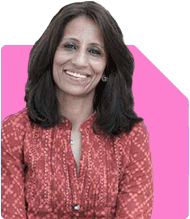Ramalingam Kalirajan |10876 Answers |Ask -Follow
Mutual Funds, Financial Planning Expert - Answered on Jun 09, 2025
He has an MBA in finance from the University of Madras and is a certified financial planner.
He is the director and chief financial planner at Holistic Investment, a Chennai-based firm that offers financial planning and wealth management advice.... more

I am 38 years old..If I have extra amount every month say 25000..do I invest in buying plot or do I do SIP in mutual funds..which will give better profit...right now there are no loan running...
We will review this in simple language with clear bullet points and logical insights.
Understanding the Nature of Each Investment
Let’s first see what both options actually mean for your financial life.
Buying a Plot of Land
This is a physical asset. You can touch and see it.
You need to arrange a large lump sum to buy a plot.
If you invest Rs. 25,000 per month, it may take years to collect enough.
Plot does not give you any monthly return.
It has no liquidity. You cannot sell quickly when you need money.
Price appreciation depends on many unknown factors.
Legal risks, encroachments, and title issues can cause problems.
You will need to keep paying for taxes, cleaning, fencing, etc.
Investing in Mutual Fund SIP
Mutual fund SIP grows your money in small amounts monthly.
You can start with Rs. 1,000 or Rs. 25,000 easily.
It is very flexible. You can increase or pause it anytime.
Your funds are invested in companies, bonds, etc., by professionals.
You get compounding growth over long term.
Funds are highly liquid. You can withdraw within 3 working days.
Taxation is favourable after one year for equity mutual funds.
Cash Flow and Monthly Benefit
Let us now look at how both options help you month by month.
Plot Investment
No monthly return is earned.
You keep paying property tax or maintenance cost.
It may remain idle for many years.
You may not find buyers easily when you need to sell.
Mutual Fund SIP
You see your wealth growing every month.
You can check and track it online anytime.
You can stop SIP anytime, based on need.
You can start monthly SWP (Systematic Withdrawal) later as income.
It builds a habit of saving and growing step by step.
Liquidity and Emergency Use
What happens when you suddenly need money?
Plot of Land
Cannot be sold quickly.
It may take months or years to find a buyer.
You may have to sell it at lower price under stress.
You cannot sell it in parts. Either full or nothing.
Mutual Fund SIP
Funds can be withdrawn anytime.
Even partial redemption is possible.
Your emergency planning stays strong and ready.
This gives peace of mind to the investor.
Maintenance and Cost Burden
Every investment has some cost. Let’s compare both here.
Land Plot
You must maintain the plot or it may get encroached.
You may need to build compound wall, put name board, etc.
You need to do regular mutation, survey, and patta update.
You may need a caretaker if plot is in another town.
All these will cost time and money every year.
Mutual Funds
There is no maintenance cost.
Fund manager and AMC take care of all investments.
You pay a small annual fee called expense ratio.
This is deducted automatically from fund value.
No stress, no physical movement, no service charges.
Tax Treatment Differences
Let us now review how both options affect your tax.
Plot Investment
No tax benefit while buying.
When you sell after 2 years, you get long-term capital gain (LTCG).
You must pay 20% LTCG tax with indexation benefit.
Buying another property within 2 years can save tax, but adds more stress.
Stamp duty, registration cost is non-refundable.
Mutual Funds
You get LTCG benefit after 1 year of holding.
Up to Rs. 1 lakh of annual gain is tax-free.
Tax is only 10% beyond that.
SIP allows tax-efficient withdrawals by planning.
No physical documents, stamp duty or paperwork.
Risk and Return Potential
Let’s understand how your money may grow over time.
Plot Investment
Return is uncertain.
Some plots may stay same value for many years.
Real estate market is illiquid and slow to react.
Resale price depends on buyer mood, location, legal history.
Sometimes, government projects may reduce value due to land regulation.
Mutual Fund SIP
Return depends on market performance, but long-term trend is positive.
Equity funds usually give better return than gold or land over 10+ years.
Risk reduces with time and diversification.
SIP also benefits from market fall due to rupee cost averaging.
Mental Stress and Peace of Mind
We often forget this point while investing.
Plot Investment
It may look like a stable asset but creates hidden tension.
You keep worrying about its value, fencing, and resale.
Any property dispute takes years in court.
Not ideal if you want peace and simplicity.
Mutual Fund SIP
Very low involvement needed.
Regular funds through CFP give you human support.
You feel more organised and in control.
Portfolio tracking is transparent and real-time.
Long-Term Wealth Creation
Let’s now check which asset builds your retirement corpus better.
Plot
Returns depend fully on future buyer.
Hard to use for retirement income.
Selling is needed to get cash flow.
SIP
Grows slowly and steadily.
Helps you reach retirement goal step-by-step.
You can start monthly income by SWP after retirement.
Works well if you aim to retire early or reduce work stress.
Certified Financial Planner Support
Let us now see why working with a CFP matters in SIP.
CFP helps choose right mutual fund mix based on your goals.
They review and rebalance your funds once a year.
They support in market crashes, so you don’t panic.
They help plan insurance, tax, and retirement together.
They give emotional and professional guidance.
Investing through MFD + CFP gives structure to your wealth building.
Regular plans give better lifetime results than direct plans.
Final Insights
You are asking the right question at the right time in life.
Buying land may feel safe, but it blocks liquidity and slows wealth growth.
SIP gives freedom, flexibility, and smart long-term compounding.
You can track, adjust, and even pause anytime as per life events.
You have no loans now. Don’t invite stress with plot purchase.
Let your Rs. 25,000/month build real wealth through mutual funds.
Talk to a Certified Financial Planner to customise your SIP journey.
They will guide you across goals like retirement, emergency, child education, or home buying.
Best Regards,
K. Ramalingam, MBA, CFP,
Chief Financial Planner,
www.holisticinvestment.in
https://www.youtube.com/@HolisticInvestment
You may like to see similar questions and answers below
Ramalingam Kalirajan |10876 Answers |Ask -Follow
Mutual Funds, Financial Planning Expert - Answered on Jul 24, 2024
Ramalingam Kalirajan |10876 Answers |Ask -Follow
Mutual Funds, Financial Planning Expert - Answered on Jun 11, 2025
Ramalingam Kalirajan |10876 Answers |Ask -Follow
Mutual Funds, Financial Planning Expert - Answered on Jun 21, 2025
Ramalingam Kalirajan |10876 Answers |Ask -Follow
Mutual Funds, Financial Planning Expert - Answered on Sep 08, 2025
Shalini Singh |180 Answers |Ask -Follow
Dating Coach - Answered on Dec 10, 2025
Radheshyam Zanwar |6740 Answers |Ask -Follow
MHT-CET, IIT-JEE, NEET-UG Expert - Answered on Dec 09, 2025
Naveenn Kummar |234 Answers |Ask -Follow
Financial Planner, MF, Insurance Expert - Answered on Dec 09, 2025
Ramalingam Kalirajan |10876 Answers |Ask -Follow
Mutual Funds, Financial Planning Expert - Answered on Dec 09, 2025
Ramalingam Kalirajan |10876 Answers |Ask -Follow
Mutual Funds, Financial Planning Expert - Answered on Dec 09, 2025
Radheshyam Zanwar |6740 Answers |Ask -Follow
MHT-CET, IIT-JEE, NEET-UG Expert - Answered on Dec 09, 2025
Radheshyam Zanwar |6740 Answers |Ask -Follow
MHT-CET, IIT-JEE, NEET-UG Expert - Answered on Dec 09, 2025
Nayagam P P |10853 Answers |Ask -Follow
Career Counsellor - Answered on Dec 09, 2025
Mayank Chandel |2569 Answers |Ask -Follow
IIT-JEE, NEET-UG, SAT, CLAT, CA, CS Exam Expert - Answered on Dec 08, 2025
Mayank Chandel |2569 Answers |Ask -Follow
IIT-JEE, NEET-UG, SAT, CLAT, CA, CS Exam Expert - Answered on Dec 08, 2025

























